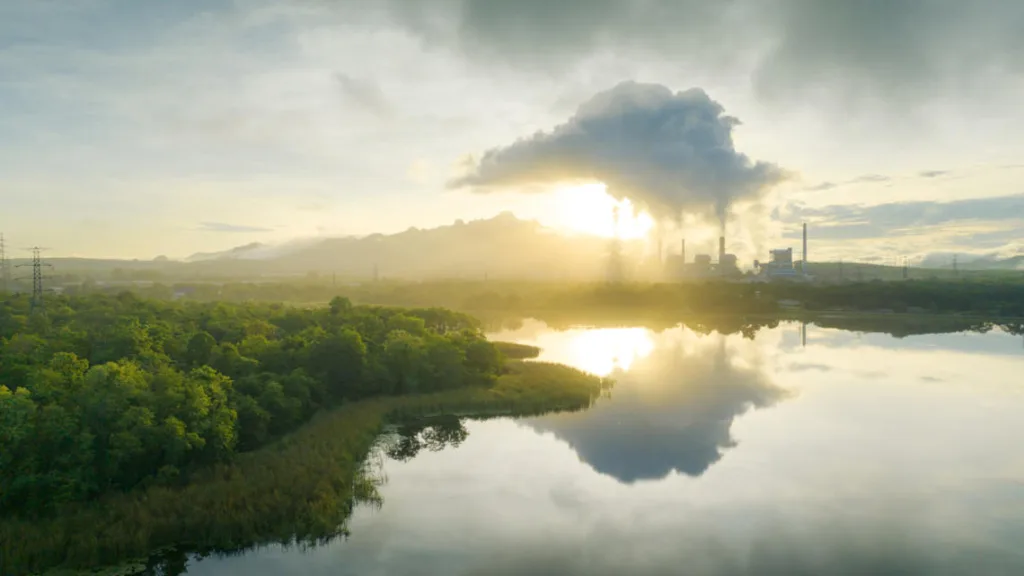Authors
Susan Brunner, Mondi
This is the first of a series of blogs from the members of WBCSD’s Forest Solutions Group (FSG) that will present diverse perspectives on the forest sector’s many connections with key global development issues. These voices from the forest sector will bring to life FSG’s mission to advance the bioeconomy and a thriving forest sector that sustains healthy productive forests & people’s well-being (see FSG video here).
Communicating effectively for any sector, any business, or even any individual is no different from communication for the forest sector – and such are the challenges. It is about being heard, about getting our message across, about being understood and ultimately about generating the desired response from our audience – be it a specific call to action or a call for trust or collaboration. We all know that the key lies in listening and understanding the different needs of stakeholders – but we have so much we want to say. That is in fact the crux of the problem – to be effective and engaging, it can’t be about what we want to communicate, but rather what our audience cares about. Who is our audience and why should they care? It is the only way we can stand out and be heard amidst the clatter, how we can engage and inspire action.
So what’s new? Well, quite a bit! In fact, we are facing a whole new world that has tuned in to long-standing social issues and raised expectations on the role of the business community to drive positive change. For the forest sector, growing public awareness of environmental and social issues in the wake of the pandemic presents a unique opportunity to highlight the crucial role of the forest sector as part of a low-carbon and circular bioeconomy. Sustainability and concerted action at a sectoral and global level have never been more relevant. Fiber-based materials are able to capture and store carbon and offer renewable solutions to substitute non-renewable and fossil-based materials in everyday products, from packaging to personal care products, from construction materials to textiles. To capitalize on this opportunity, two things are needed: 1) transparency in production and management processes to ensure credibility and 2) trustful stakeholder relationships. Both rely on effective communication with stakeholders.
On transparency
As a sector, we have come a long way when it comes to transparency. Regulations to prohibit illegal activities, like the Forest Law Enforcement, Governance and Trade Action Plan (FLEGT) in 2003, US Lacey Action in 2008, the EU Timber Regulation in 2013 and the Japan Clean Wood Act in 2016 have created a strong legal foundation. Forest certification schemes like FSC™ and PEFC™ support responsible forest management and enable traceability from the forest to the final product through chain-of-custody. At a corporate level, ESG reporting has become mainstream and how sustainably a company performs has evolved from being compliance driven to bringing a competitive, commercial advantage.
Tools abound to convey that transparency from a company to a site or even product level, be it a list of fiber sources or established environmental declarations like Product Environmental Footprints or Life Cycle Assessments. These tools are primarily targeted to stakeholders who have exposure to and an understanding of the relevant sustainability challenges and complexities of the forest sector.
Consumers, on the other hand, can find it challenging to make purchasing decisions based on the real environmental performance of products and services, also given the proliferation of non-substantiated green marketing claims. Consumers will increasingly seek to make responsible purchasing choices, and it is up to us as a sector to ensure that we hold ourselves accountable to the highest standards of credibility, while keeping our audience in mind. We need to simplify our messages to make them easy to understand, refrain from jargon, explain the ‘why’ and make it relevant for consumers. What are we doing to prevent deforestation in our supply chains – and how can our customers or consumers do their part? What do we as a sector do to keep forests thriving?
So what role does the forest sector play?
The forest sector’s contribution to a bioeconomy is dependent upon how policymakers, customers and consumers perceive, accept and promote the forest-based value chain as well as its products and services. Increasing demand for fiber-based solutions, as well as climate change-related challenges, have put a spotlight on the role of forests and the forest sector. Sustainable, working forests that can deliver these renewable solutions while providing a broad array of services, from cleaning air and water to preserving biodiversity and regulating climate are needed. Communication is the most important instrument we have to build a stronger awareness of these positive impacts and build public support and trust in the forest sector.
Research shows that while there is a strong public relationship to forests, there is less positive relationship to forestry as a socio-economic sector. A 2020 study by the European Forest Institute on public perceptions of forestry and the forest-based bioeconomy in the EU found that forests are primarily perceived as ‘a place of nature.’ Economic benefits were consistently rated lower by the public than the environmental and social benefits of forests, such as absorbing carbon dioxide and preserving biodiversity of animals and plants.
The image of the sector is often negative, especially in relation to harvesting wood from forests. Fiber-based products and solutions are desirable, yet people don’t want trees to be felled in the process. It is also often difficult for consumers to differentiate information received in the media regarding the global state of forests, with deforestation and forest degradation taking place at alarming rates in tropical rainforests versus what is happening in responsibly managed (semi)-natural forests and plantations. Between 2015 and 2020, the rate of deforestation was estimated at 10 million hectares per year, down from 16 million hectares per year in the 1990s. At the same time, forests in Europe are growing both in area and in stock.
Where to go from here?
The forest sector has a number of stakeholders and audiences, from forest owners, forest industries, consumers, employees, communities, NGOs, rating agencies, shareholders, industry bodies, and scientific organizations to regulators. They each have different interests, different needs and preferences. I still joke today that the fastest way to clear the room is to start talking about ecosystem services to sales and marketing colleagues. It was what I wanted to say, but not what they needed to hear. I wasn’t speaking their language. But understanding how sustainability performance is critical for competitive advantage is something that resonates with them.
Communication can only be successful when the needs and concerns of the listener come first. Every good conversation starts with good listening. As Simon Sinek once said, “Great leaders communicate and great communicators lead.” The forest sector itself has a leading role to play in the transition to a low-carbon, circular bioeconomy and to achieve it we have to be heard, we have to be credible, and ultimately we have to inspire change and action to help create more sustainable and thriving forest landscapes.
Susan Brunner, Senior Sustainability Positioning Manager, Mondi
WBCSD news articles and insights may be republished in accordance with the Creative Commons Attribution-NonCommercial-NoDerivatives 4.0 International Public License, and in accordance with our Privacy Policy. All Content must be featured with due credits.
Outline
Related
Content

TNFD releases proposed disclosure metrics for the forest sector
19 September, 2023

Renewable electricity procurement: blazing a trail from innovation to leadership
27 April, 2023

Carbon removals: Why a portfolio approach is key to achieving climate goals
19 April, 2023
